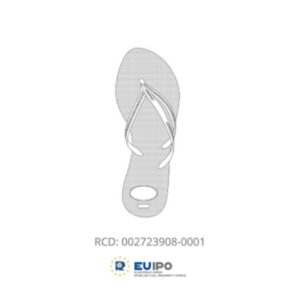Section 5 of The Trademark Act concerns itself with the relative grounds for refusal- grounds upon which your trademark can be opposed.
S5(1) of the 1994 Trademark Act is concerned with conflicts where the marks are identical and the goods or services are also identical:
Section 5 Relative grounds for refusal of registration.
(1)A trade mark shall not be registered if it is identical with an earlier trade mark and the goods or services for which the trade mark is applied for are identical with the goods or services for which the earlier trade mark is protected.
The ECJ, in its judgment in the LTJ Diffusion SA v. Sadas Vertbaudet SA case, C-291/00, said that “ a sign is identical with the trade mark where it reproduces, without any modification or addition, all the elements constituting the trade mark or where, viewed as a whole, it contains differences so insignificant that they may go unnoticed by an average consumer.”
This approach was followed by the English Court of Appeal in the Reed v. Reed case, [2004] EWCA (Civ) 159, Jacob LJ. When performing a relative grounds search for conflicting marks, an earlier mark will be considered identical if: a) all the elements are the same, or the differences between the two are so minor that the average consumer is unlikely to notice them; and b) the specifications cover identical goods or services. In deciding the meaning of particular terms in the specifications, examiners should not “stretch” the meaning of the terms to cover all eventualities, but should give the terms their ordinary natural meanings.
If only a) OR b) is present, the objection will fall under section 5(2) rather than 5(1):
(2)A trade mark shall not be registered if because—
(a)it is identical with an earlier trade mark and is to be registered for goods or services similar to those for which the earlier trade mark is protected, or
(b)it is similar to an earlier trade mark and is to be registered for goods or services identical with or similar to those for which the earlier trade mark is protected,
there exists a likelihood of confusion on the part of the public, which includes the likelihood of association with the earlier trade mark.
Section 5(2)(a) and (b) Section 5(2) of the Act implements Article 4(1)(b) of the 1988 Directive 89/10/EEC. The European Court of Justice (ECJ) has provided guidance in the form of four judgements on cases which were referred to the Court from differing national jurisdictions. These are: Sabel BV v Puma AG (C-251/95) Canon Kabushiki Kaisha v Metro-Goldwyn-Mayer Inc (C-39/97) Lloyd Schuhfabrik Meyer & Co GmbH v Klijsen Handel B.V. (C-342/97) Medion AG v Thomson multimedia Sales Germany & Austria Gmbh, Case C-120/04.
Similarity of goods/services.
In determining the degree of similarity between the respective goods/services, the following should be taken into account: Nature of the goods/services;
The intended purpose of the goods or services; Method of use; Whether the goods/services are in competition; Whether they are complementary.











